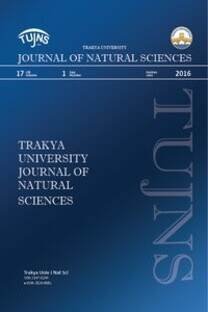Compartmentalization of body of a fat dormouse Glis glis
eşey oranı, allometri, yaşam öyküsü, kış uykusu, mevsimsel değişimler, morfometri, Glis glis, üreme davranışı, vücut ağırlığı
Bir yediuyur Glis glis' de vücut ağırlığı bölüşümü
sex ratio, allometry, life history, hibernation, seasonal variation, morphometrics, Glis glis, reproductive behaviour, body weight,
___
- 1. Storch, G. Glis glis (Linnaeus, 1766) - Siebenschläfer. In: Niethammer, J., Krapp, F. (eds.) Handbuch der Säugetiere Europas 1/I. Akademische Verlagsgesellschaft, Wiesbaden, pp. 243-258, 1978. 2. Panteleyev, P. A., Terekhina, A. N., Varshavsky, A. A. Ecogeographic variation in rodents. Nauka, Moscow, 1990. 3. Röhrig, E., Ulrich, B. eds. Ecosystems of the World 7. Temperate deciduous forests. Elsevier, Amsterdam, 1991. 4. Gliwicz, J. Competitive interactions within a forest rodent community in central Poland. Oikos 37: 353-362, 1981. 5. Sork, V. L., Bramble, J., Sexton, O. Ecology of mast-fruiting tree species in North America. Ecology 74: 528-541, 1993. 6. Kitchings, J. T., Walton, B. T. Fauna of the North American temperate deciduous forest. In: Röhrig, E., Ulrich, B. (eds.): Ecosystems of the World 7. Temperate deciduous forests. Elsevier, Amsterdam, pp. 345-375, 1991. 7. Kirkland, G. L. Small mammal communities in temperate North American forests. Aust. Mammal. 8: 137-144, 1985. 8. Ognev, S. I. Mammals of the U.S.S.R. and adjacent countries. Mammals of eastern Europe and northern Asia. Vol. V, Rodents. Israel Program for Scientific Translations, Jerusalem, 1963. 9. Bieber, C. Sexual activity and reproduction in three feral subpopulations of the fat dormouse (Myoxus glis). Natura Croatica 6: 205-216, 1997. 10. Bieber, C. Population dynamics, sexual activity, and reproductive failure in the fat dormouse (Myoxus glis). J. Zool., Lond. 244: 223-229, 1998. 11. Morris, P. The edible dormouse (Glis glis). The Mammal Society, London, 1997. 12. Eiberle, K. Zur Populationsdynamik des Siebenschläfers (Glis glis L.) im Lehrwald der ETHZ. Schweiz. Z. Forstwes. 128(8), 1977. 13. Ružić-Petrov, A. Prilog poznavanju ekologije tekunice Citellus citellus L. Zbornik radova Instituta za ekologiju i biogeografiju, Beograd 1: 97-140, 1950. 14. Flemin, I. H. Life-history strategies. In: D. M. Stoddart (ed.) Ecology of small mammals. Chapman and Hall, London, pp. 1-52, 1979. 15. Pierson, E. D., Stack, M. H. Methods of body composition analysis. In: Kunz, T. H. (ed.) Ecological and behavioral methods for the study of bats. Smithsonian Institution Press, Washington D.C., pp. 387-403. 1988 16. Coblentz, B. E., Van Vuren, D. Changes in kidney mass in the Indian mongoose (Herpestes auropunctatus). J. Mammalogy 69: 614-618, 1988. 17. Gaisler, J., Holas, V., Homolka, M. Ecology and reproduction of Gliridae (Mammalia) in Northern Moravia. Folia Zoologica 26: 213-228, 1977. 18. Lewontin, R. C. On the measurement of relative variability. Systematic Zool. 15: 141-142, 1966. 19. Pollard, J. H. Numerical and statistical techniques with examples from the life sciences. Cambridge University Press, Cambridge, 1979. 20. Sokal, R. R., Rohlf, F. J. Biometry. 2nd ed. W. H. Freeman and Comp., New York, 1981. 21. Michener, G. R. Sexual differences in over-wintered torpor patterns of Richardson ground squirrels: why do males emerge from hibernation before females? Behav. Ecol. Socio-biol. 14: 29-38, 1992. 22. Koenig, L. Das Aktionssystem des Siebenschläfers (Glis glis L.) Z. Tierphysiol. 17: 427-505, 1960. 23. Wood, A. J., Cowan, I. McT., Daniel, M. J. Organ weight – body weight relations in the family Mustelidae: the mink (Mustela vison). Canadian Journal of Zoology 43: 55-68, 1965. 24. Cavallini, P. Internal organ masses of the red fox Vulpes vulpes: data from the wild. Acta Theriologica 42: 91-98, 1997. 25. Gabor, T. M., Hellgren, E. C., Silvy, N. J. Renal morphology of sympatric suiformes: implications for competition. Journal of Mammalogy 78: 1089-1095, 1997. 26. Prothero, J. 1984. Organ scaling in mammals: the kidneys. Comp. Biochem. Physiol. 77A: 133-138. 27. Coblentz, B. E., Van Vuren, D. Changes in kidney mass in the Indian mongoose (Herpestes auropunctatus). Journal of Mammalogy 69: 614-618, 1988. 28. Leamy, L., Bradley, D. Static and growth allometry of morphometric traits in randombred house mice. Evolution 36: 1200-1212, 1982. 29. Joy, J. E., Melnyk, R. B., Mrosovsky, N. Reproductive cycles in the male dormouse (Glis glis). Comp. Biochem. Physiol. A 67: 219-221, 1980 30. Manly, B. F. J. Multivariate statistical methods. A primer. 2nd ed. Chapman & Hall, London, 1994. 31. Calder, W. A. Size, function, and life history. Harvard University Press, Cambridge, 1984.
- ISSN: 1302-647X
- Yayın Aralığı: 1
- Başlangıç: 2018
- Yayıncı: -
Dormouse associations in Slovenia-A new approach to an old tradition
Boris KRYSTUFEK, Werner HABERL
Daily torpor in the edible dormouse Glis glis
Microgeographical non-metrical cranial diversity of the fat dormouse (Glis glis L.)
Winter activity in the forest dormouse Dryomys nitedula
Ecology of the garden dormouse (Eliomys quercinus) inn the alpine habitat
Sandro BERTOLİNO, Italo CURRADO
Compartmentalization of body of a fat dormouse Glis glis
The vocal repertoire of Graphiurus parvus, and comparisons with other species of dormice
Rainer HUTTERER, Gustav PETERS
Dormice in the diet of owls in the Middle East
Weight changes of the comon dormouse (Muscardinus avellanarius L.) during the year in Lithuania
